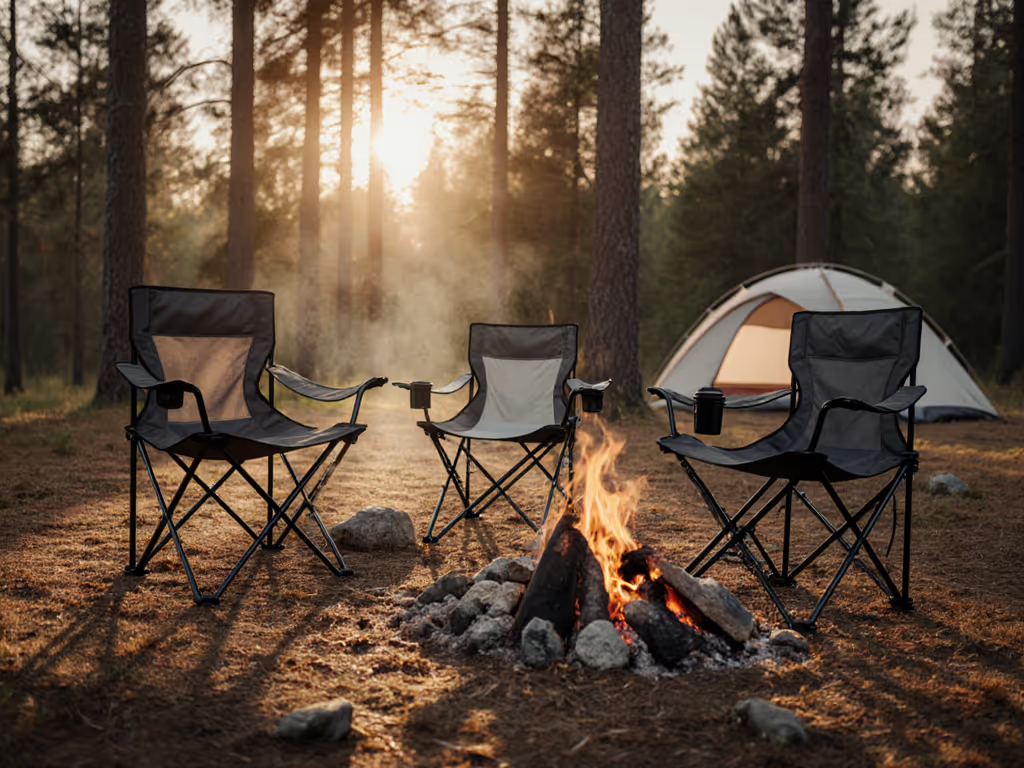
How to Choose Inflatable Mattresses & Air Beds for Ultimate Camping Comfort (Without the Hassle)
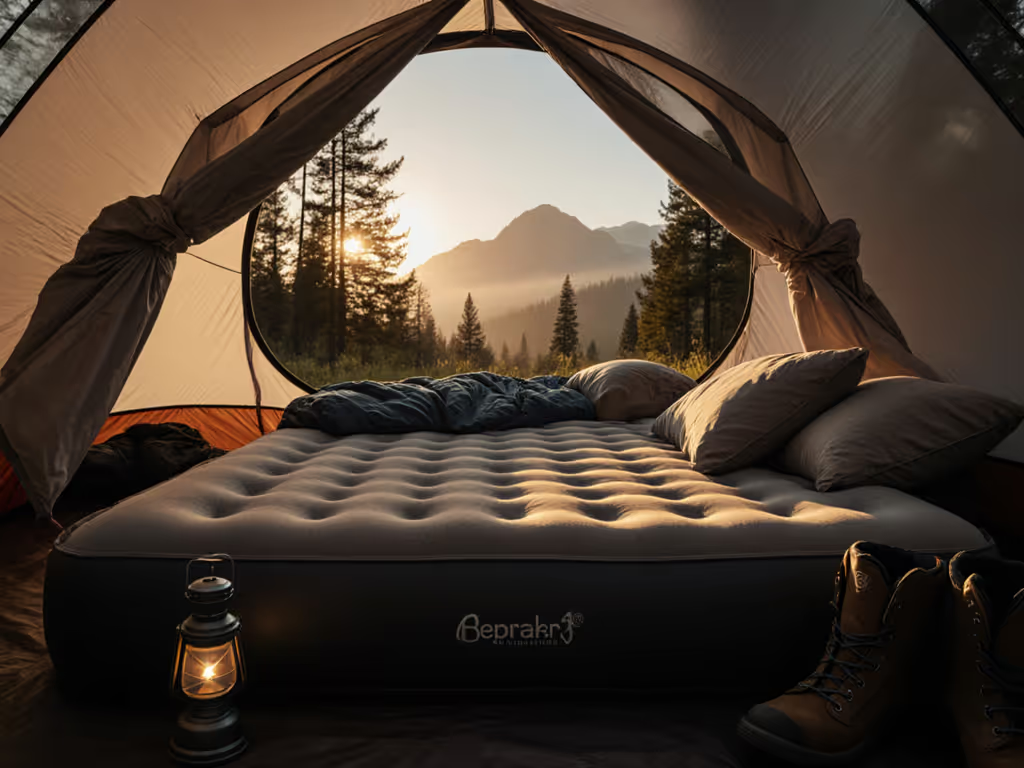
How to Choose Inflatable Mattresses & Air Beds for Ultimate Camping Comfort (Without the Hassle)
How to Choose Inflatable Mattresses & Air Beds for Ultimate Camping Comfort (Without the Hassle)
You want camp sleep that feels like home, minus the guesswork. The right inflatable mattresses & air beds can transform a chilly, lumpy night into deep, restorative sleep that powers your next day’s adventure. Yet the marketplace is noisy, specs are confusing, and “one size fits all” almost never fits anyone. This guide cuts through the clutter with plain-English insights, practical comparisons, and field-tested tips drawn from real campsites. And because your bed is only one part of a relaxing camp, you will also find guidance from Camper Loadouts on integrating your sleep pad with camping furniture and related accessories so the whole setup works as one cohesive system.
Inflatable Mattresses & Air Beds: Core Buying Factors
Choosing a great air bed starts with a few fundamentals: size and fit, support structure, insulation, pump system, materials, and pack volume. Think of these elements like links in a chain; the weakest one sets your nightly comfort. For example, a queen bed that touches tent walls may wick cold and collect condensation, while an uninsulated single-layer model can feel bouncy and drafty. Meanwhile, an awkward valve or slow pump can turn setup into a chore, especially after a long drive. If you prioritize the features that match your trips, you will sleep better and set up faster. Ask yourself: do you value plushness, warmth, speed, or compactness most? If you're weighing the broader trade-offs, our inflatable vs solid camp furniture comparison clarifies stability, setup time, and pack size across your whole campsite.
When evaluating options in our buying guides and reviews, support structure greatly shapes the feel. Internal coil beams distribute weight for a more “bed-like” experience, while air-sprung cells and hybrid foam cores reduce bounce and motion transfer. Insulated models with a higher R-value (thermal resistance rating) keep heat from escaping into the ground, which is crucial in shoulder seasons. Moreover, materials matter; thermoplastic polyurethane (TPU) is often lighter and more temperature stable than polyvinyl chloride (PVC), and welded seams can outlast glued ones. When in doubt, focus on the nightly outcome you want: quiet stability, warm cushioning, and predictable firmness from dusk to dawn.
Common Air Bed Constructions and Best Uses
| Construction | Feel | Best For | Pros | Trade-offs |
|---|---|---|---|---|
| Coil-Beam Air Chambers | Plush, mattress-like | Glamping, car camping | Even support, familiar comfort | Heavier, larger pack size |
| Air-Sprung Cells | Stable, low bounce | Mixed terrain, couples | Good motion isolation | Can feel firmer to some |
| Hybrid Foam + Air | Supportive and warm | Cold conditions, anglers | Higher R-value (thermal resistance rating) | More expensive |
| Single-Layer Air | Floaty, lightweight | Quick overnights, spare bed | Budget-friendly, fast setup | Less stable, less warm |
Right Size, Right Height: Fit, Thickness, and Sleep Systems
Dimensions determine not just comfort but how your entire campsite flows. Measure your tent’s interior footprint and peak height, then compare to the mattress dimensions in inches (in) or centimeters (cm). Leave hand-width clearance around edges so bedding breathes and walls do not press the mattress into a chilly film of condensation. Thickness also matters: 6 to 10 inches (in) feels cushy and reduces pressure points for side sleepers, while lower-profile pads around 3 to 4 inches (in) pack tighter and ride flatter in rooftop or micro-camping setups. Visualize a simple cross-section: the thicker the cushion, the less ground irregularities you feel, but the more air mass you need to inflate and regulate overnight.
Watch This Helpful Video
To help you better understand inflatable mattresses & air beds, we've included this informative video from Air Mattress Review. It provides valuable insights and visual demonstrations that complement the written content.
Couples should consider queen or full sizes with internal baffling to curb nighttime “see-saw” effect. Solo travelers may prefer a wide single to keep elbows off the floor without wasting space. Families often stack a cot under a thinner pad to gain storage beneath and keep bedding away from sand and grit. Furthermore, your bed must integrate with your furniture. If your table sits too high, you end up perched on the edge of your mattress or camp chair during pre-bed routines. Camper Loadouts provides seat-to-table geometry guidance to ensure your chair height, cot height, and mattress thickness work together so you can lounge, read, and snack without awkward hunching. For dialed surface heights and reach zones, see our ergonomic camping tables guide to match table height with bed and chair positions.
Size Guide by User and Tent Fit
| User Profile | Recommended Size | Ideal Thickness | Tent Fit Note |
|---|---|---|---|
| Solo, side sleeper | Wide Single | 4–6 inches (in) | Leave 2–3 inches (in) from walls |
| Couple, comfort-first | Queen | 8–10 inches (in) | Check door clearance for entry/exit |
| Family with kids | Full or two Singles | 4–8 inches (in) | Modular layout for pathways inside |
| Angler on weekender | Single + Cot | 3–4 inches (in) on cot | Stores tackle under cot to save space |
Pumps, Valves, and Inflation Speed Explained
Fast, reliable inflation removes friction from camp setup. Built-in electric pumps that run on alternating current (AC) are excellent for powered campgrounds, while battery or rechargeable units that run on direct current (DC) shine for dispersed camping. Some compact pumps charge via Universal Serial Bus (USB), and high-volume manual pumps remain a fail-safe for remote trips. Dual-stage valves allow high-flow fill and precise top-off; one-way flaps prevent that frustrating “balloon deflation” when you pull the nozzle. Finally, consider noise: pumps measured around 65 to 75 decibels (dB) are common, and a quieter unit helps with early arrivals or late-night adjustments.
Speed is not just convenience; it is comfort insurance. Evening temperatures drop quickly, and cooler air inside a bed contracts, softening the surface. A quick top-off before sleep restores firmness and spinal alignment. In field checks published by several outdoor testers, rechargeable pumps often inflated a queen mattress in about 2 to 4 minutes, while larger integrated alternating current (AC) pumps were even faster. For redundancy, many campers pair a rechargeable pump with a back-up manual option so a dead battery never ruins a trip. With a good valve, your pump time is spent inflating, not fighting air leaks at the interface.
Pump Types Compared
| Pump Type | Power | Typical Inflate Time (Queen) | Noise | Best Use |
|---|---|---|---|---|
| Built-in Electric | Alternating current (AC) | 2–3 minutes | Medium | Powered sites, glamping |
| Rechargeable Portable | Direct current (DC), Universal Serial Bus (USB) charging | 3–4 minutes | Medium–Low | Car camping, fishing trips |
| Battery Operated | Direct current (DC) disposable cells | 4–6 minutes | Medium | Backup for remote sites |
| Manual Hand/Foot | Human power | 6–10 minutes | Low | Ultralow-tech reliability |
Warmth, Materials, and Leak Prevention
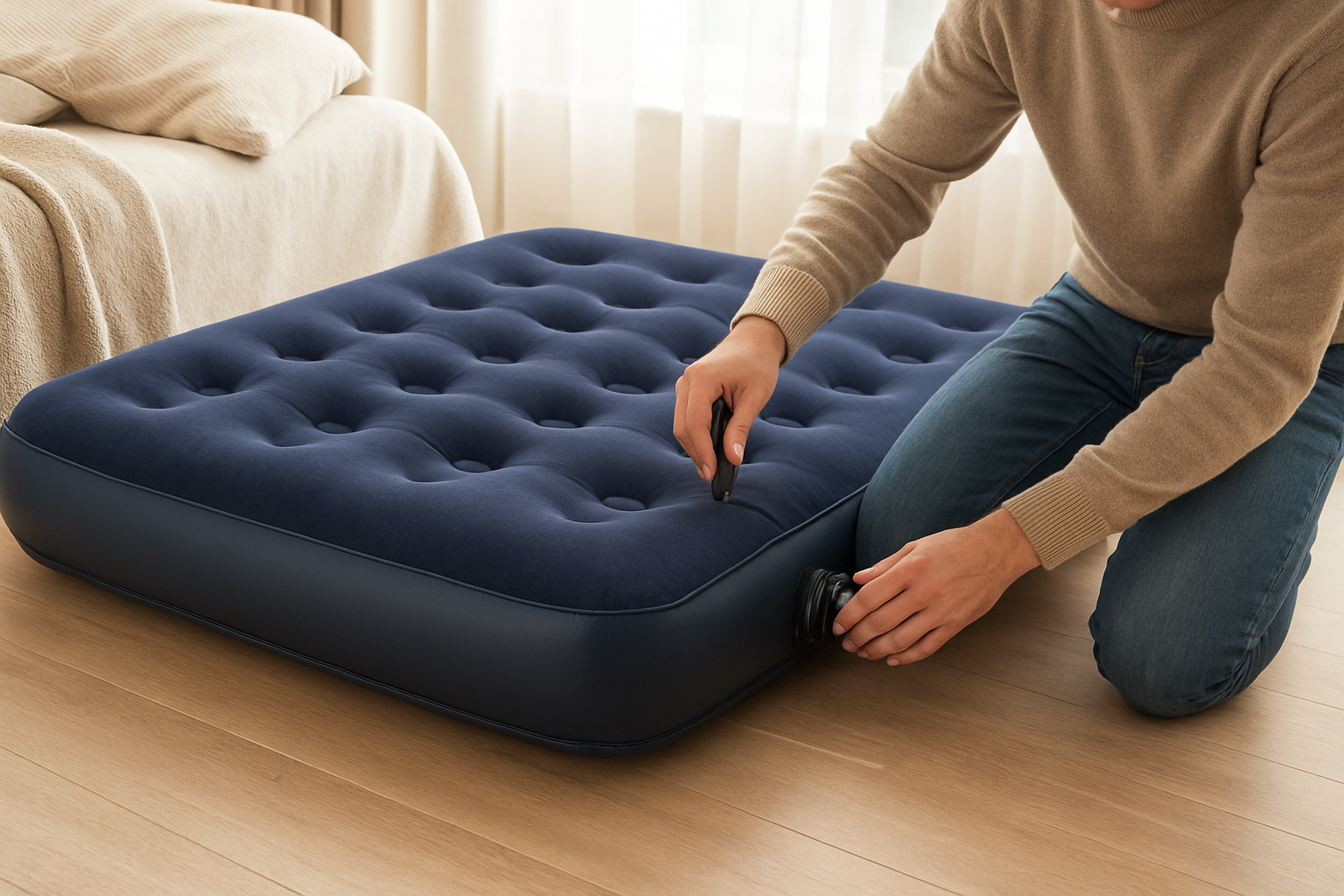
Ground contact steals heat faster than most campers expect. Look for an R-value (thermal resistance rating) that matches your season: around 2 to 3 for summer, 3 to 5 for shoulder seasons, and 5+ for frosty nights. Hybrid foam cores, reflective layers, or insulated baffling reduce heat loss without adding bulk. Meanwhile, materials affect longevity and comfort. Polyvinyl chloride (PVC) is common and affordable, but can stiffen in cold. Thermoplastic polyurethane (TPU) maintains flexibility across temperatures and often bonds well with fabrics for quieter sleep. A soft upper fabric reduces squeak against sleeping bags and keeps sheets in place. These are the kinds of material and performance details we analyze in our reviews and buying guides to help you choose the best fit for your trips.
Preventing leaks starts before you leave home. Clear your tent floor, deploy a footprint, and sweep for thorns. Inflate once at home to check for seam hissing or slow leaks, and pack a repair kit with alcohol wipes, adhesive patches, and fine sandpaper. Industry audits and park ranger anecdotes both point to punctures from hidden debris as the top failure. Second is over-inflation in hot sun, where internal pressure rises. To counter that, fill to firm but not rock-hard in mid-afternoon, then fine-tune at bedtime. This simple habit is one of the highest-impact best practices you can adopt. To protect beds, chairs, and tables from rain, wind, and UV, use the strategies in our weather-tough setup guide.
Material Snapshot
| Material | Durability | Temperature Behavior | Noise | Notes |
|---|---|---|---|---|
| Polyvinyl chloride (PVC) | Good | Stiffens in cold | Moderate | Budget-friendly, widely available |
| Thermoplastic polyurethane (TPU) | Very good | Stable across temps | Low | Lighter, premium feel |
| PVC with fabric top | Good | Moderate | Lower | Grippy surface for sheets |
Real-World Loadouts: Comfort That Works as a System
Great sleep is easier when your bed integrates with chairs, tables, cots, and organizers. Camper Loadouts specializes in helping campers turn individual items into cohesive, modular glamping furniture setups. By mapping seat height, table surface height, and bed thickness, we avoid the all-too-common mismatch that leads to slouching breakfasts or rushed dinners. For example, if your chair sits at 16 inches (in) and your table is 28 inches (in), we recommend mattress and cot heights that keep your knees and elbows in a neutral posture while you read, snack, or plan tomorrow’s route. This is not just comfort - it is energy conservation. For a room-like flow at camp, follow our seamless camp furniture setup guide to place beds, tables, and seating for effortless movement.
Consider three scenarios. A glamping couple uses a queen hybrid air bed with an insulated core, paired with a 28-inch (in) folding table and 17-inch (in) camp chairs; the geometry enables relaxed journaling before lights out. A weekend angler chooses a single 4-inch (in) insulated pad on a cot, stowing tackle boxes beneath for a cleaner tent and faster morning exits. A family of four splits into two full-size beds plus a low organizer bench between; that aisle keeps traffic flowing during late-night bathroom trips. In each case, the data-driven matching that Camper Loadouts provides removes friction and raises the ceiling on how good camp life can feel.
System Fit: Heights and Pack Volume
| Setup | Bed Thickness | Chair Seat Height | Table Height | Pack Volume |
|---|---|---|---|---|
| Glamping Couple | 8–10 inches (in) | 17 inches (in) | 28 inches (in) | Medium–High |
| Angler + Cot | 3–4 inches (in) | 16 inches (in) | 26–28 inches (in) | Low–Medium |
| Family of Four | 4–8 inches (in) | 16–18 inches (in) | 28–30 inches (in) | Medium |
Insulation, Seasons, and Bedding Choices
Beyond the mattress, bedding can make or break sleep. In warmer months, a fitted sheet and light quilt on top of your air bed improves moisture control and reduces stickiness, especially on PVC (polyvinyl chloride) surfaces. For shoulder seasons, pair insulated models with a high-loft blanket or a sleeping bag with a comfort rating 10 degrees Fahrenheit (°F) below the expected low; the extra margin covers wind and humidity swings. Many campers also add a thin closed-cell foam topper under the sheet, which damps bounce and adds insurance against micro-leaks. Think of it as a mattress pad for the outdoors.
Ventilation is equally vital. Crack tent vents and keep a low opening for crossflow, which reduces condensation on fabric walls that could brush your bedding. If you camp near water, expect higher humidity and pack a quick-dry top sheet. Field notes from outfitters suggest that layering a warm base layer in colder months can reduce perceived heat loss by up to 15 percent (%) without increasing bedding bulk. Finally, if you and a partner run at different temperatures, consider two single bags zipped together or separate quilts; temperature “zoning” often solves tug-of-war at 3 a.m.
Care, Storage, and On-the-Spot Fixes
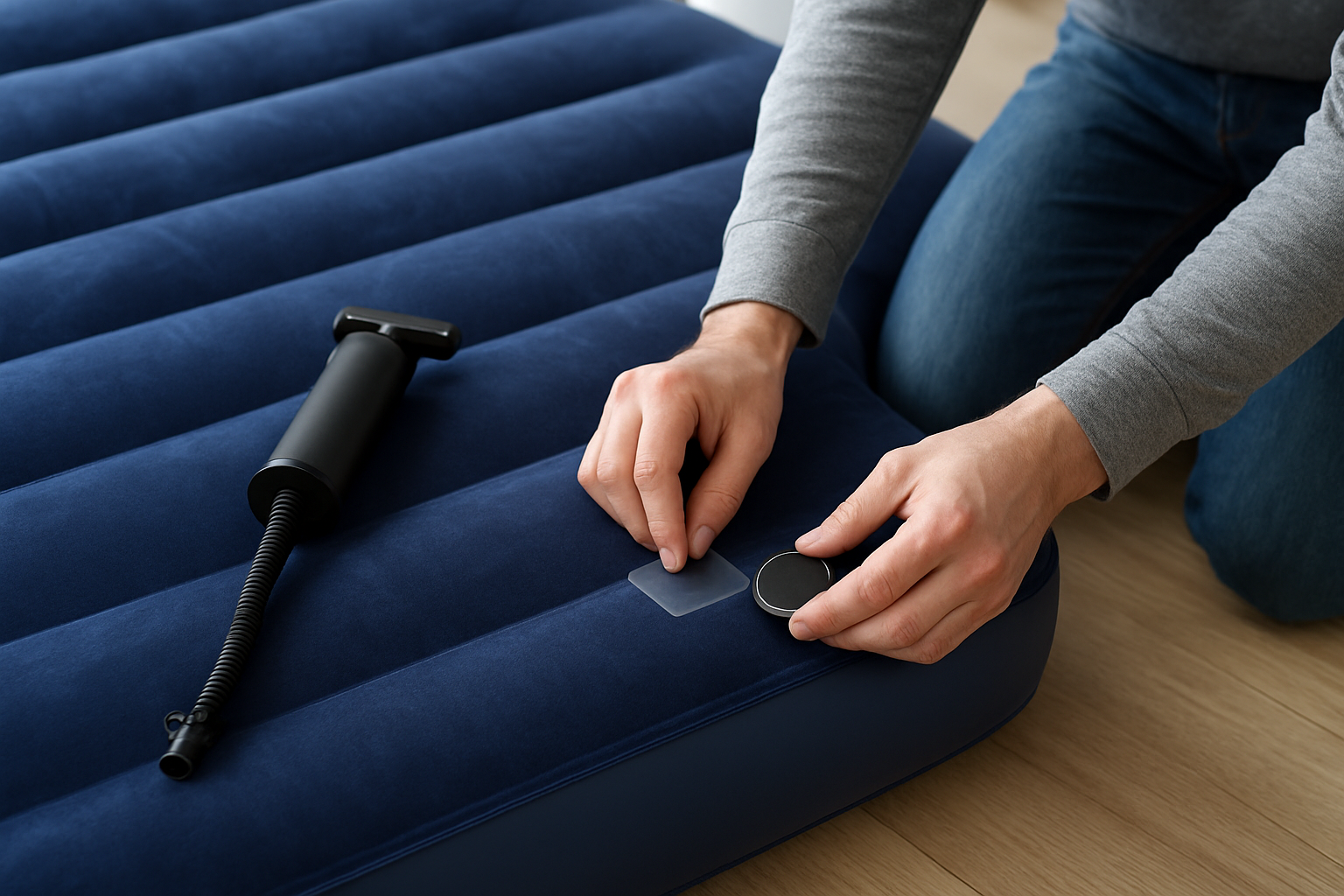
Durability starts with care. Always deploy a footprint or thick groundsheet, and inspect for burrs or thorns before setup. Keep food crumbs off the bed to deter critters, and avoid direct sun baking during the day, which can raise internal pressure. When breaking camp, let the bed air out for 5 to 10 minutes so moisture evaporates, then roll from the foot toward the valve to push the last air out. At home, store loosely in a cool, dry place instead of compressed; this reduces crease stress on seams and extends material life, especially for thermoplastic polyurethane (TPU) blends.
Minor leaks are fixable, even in the field. Mix a drop of soap in water, sponge the surface, and look for slow bubbles. Mark the spot with tape, dry thoroughly, lightly scuff with the included sandpaper if required, then apply a patch according to kit directions. Many campers report that a proper patch can outlast the original seam. If a valve is the culprit, cleaning lint from the gasket often restores a seal. And one more pro tip: pack a short repair checklist in your bag so late-night fixes are calm and methodical, not frantic.
How Camper Loadouts Makes It Effortless
Most camping furniture is mismatched or uncomfortable, leading to unstable seating arrangements and rushed camp meals due to improper seat-to-table fit, instability, and inefficient packing. Camper Loadouts solves this with data-driven guides that match chairs, tables, cots, and organizers for optimal comfort, stability, and pack efficiency. For sleepers, that means your inflatable mattress thickness, cot height, and bedding all align with your chair and table heights so you can unwind, stretch, and prepare for bed without hunching or kneeling on hard ground. Our guides include recommendations for car camping accessories and ergonomic upgrades that tighten the system further by minimizing wasted volume and setup time.
Beyond comparisons, we offer chair and table pairing guides, fishing-specific chair comparisons for anglers who need longer sits, and DIY (do it yourself) wilderness furniture building plans for tinkerers who want custom geometry. We measure seat pan depth, armrest height, and tabletop clearance so your pre-bed routines feel natural around the mattress you choose. The payoff is simple: a cohesive, modular glamping furniture setup where every piece cooperates. You bring the campsite; Camper Loadouts brings the fit and finish that turns it into a comfortable outdoor living room.
Quick Decision Path: Which Bed Should You Choose?
If you crave hotel-like plushness for weekend glamping, choose a queen coil-beam or hybrid model 8 to 10 inches (in) thick with a built-in alternating current (AC) pump for speed. If you are a space-conscious angler, a single insulated pad 3 to 4 inches (in) thick on a cot keeps gear organized and wake-ups quiet. For families rotating between campgrounds, two full-size beds create flexible layouts that preserve a central walkway and play space. If space is tight in your tent or vehicle, see our space-saving camp furniture solutions to keep pathways clear without sacrificing comfort. Prefer redundancy? Pair a rechargeable direct current (DC) pump with a manual foot pump so power is never a constraint. Then, layer bedding to season: airy sheets for summer, lofted quilts for the shoulder months, and insulated pads for cold snaps.
- Define your top priority: comfort, warmth, speed, or compactness.
- Measure your tent interior and plan furniture pathways.
- Match thickness to sleep style and season using R-value (thermal resistance rating).
- Choose a pump system that fits your power access.
- Integrate with chairs and tables using Camper Loadouts recommendations for geometry and pack volume.
Sleep like home without lugging a bedroom set. With the right inflatable mattresses & air beds and a furniture system tuned by Camper Loadouts, your camp becomes a place you look forward to ending the day. And tomorrow? You wake up energized, not stiff.
Sleep Right, Adventure More
Choose well and the ground disappears beneath you. The right size, support, insulation, and pump system all add up to effortless comfort that lets you focus on the sunrise, not on sore hips.
Imagine next season’s trips with a dialed sleeping surface and a seamlessly matched sitting and dining zone that makes camp feel like a lodge. In the next 12 months, small upgrades can compound into big comfort gains.
What will you change first to build a cohesive, comfortable camp around your inflatable mattresses & air beds?
Additional Resources
Explore these authoritative resources to dive deeper into inflatable mattresses & air beds.
Elevate Camp Comfort with Camper Loadouts Pairing Guides
Outdoor enthusiasts and glampers get data-driven chair and table pairing guides, matching cots and organizers for comfort, stability, and pack efficiency, ensuring cohesive setups with inflatable mattresses & air beds.
Related Articles

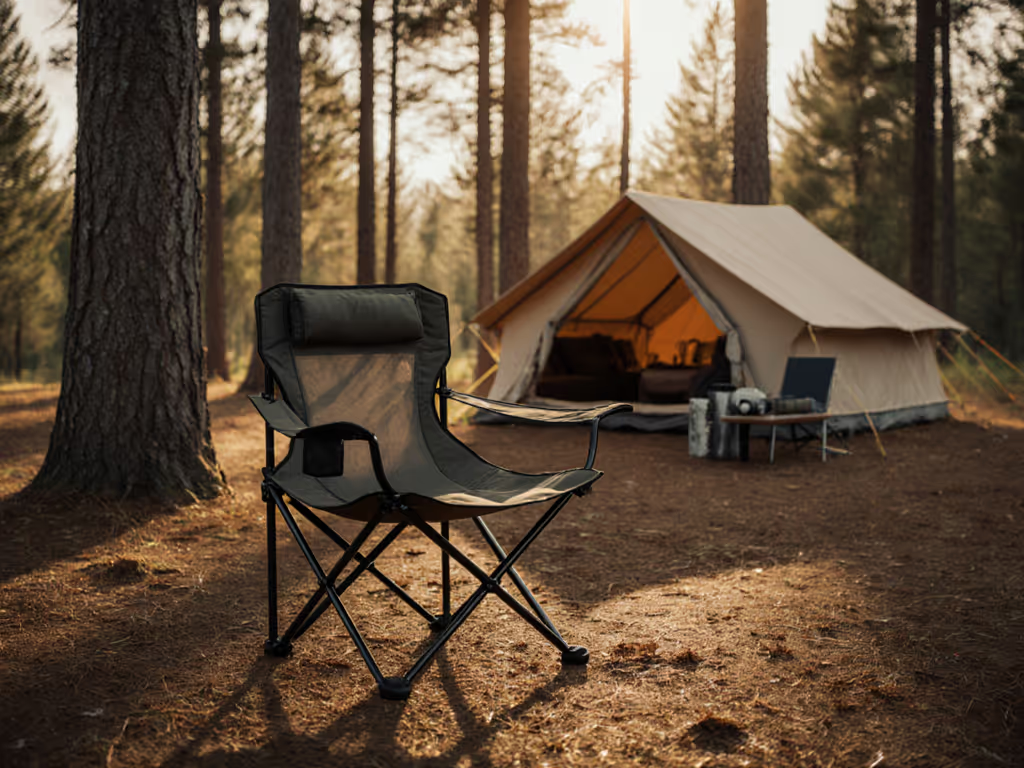
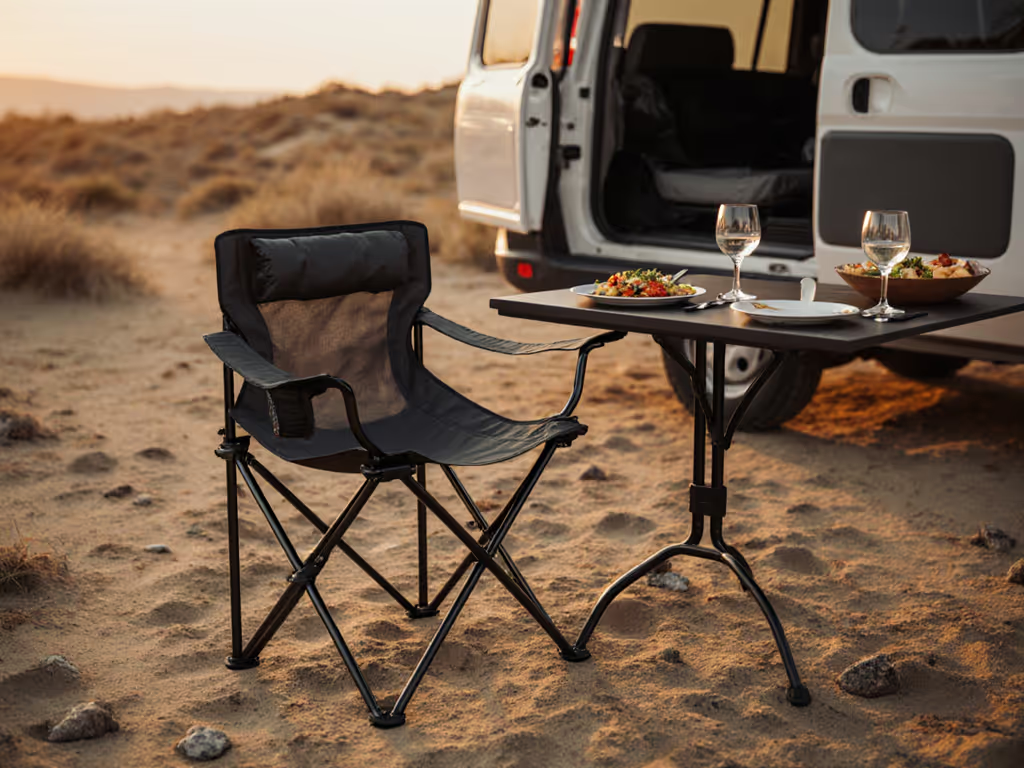
Car Camping Accessories: Ergonomic Chair Upgrades
Dial in seat-to-table geometry - not more padding - to turn rushed camp meals into relaxed, long-sit evenings. Get the exact measurements and simple fixes to match chair and table heights, stabilize on sand or rock, and keep groups comfortable from appetizers to dessert.
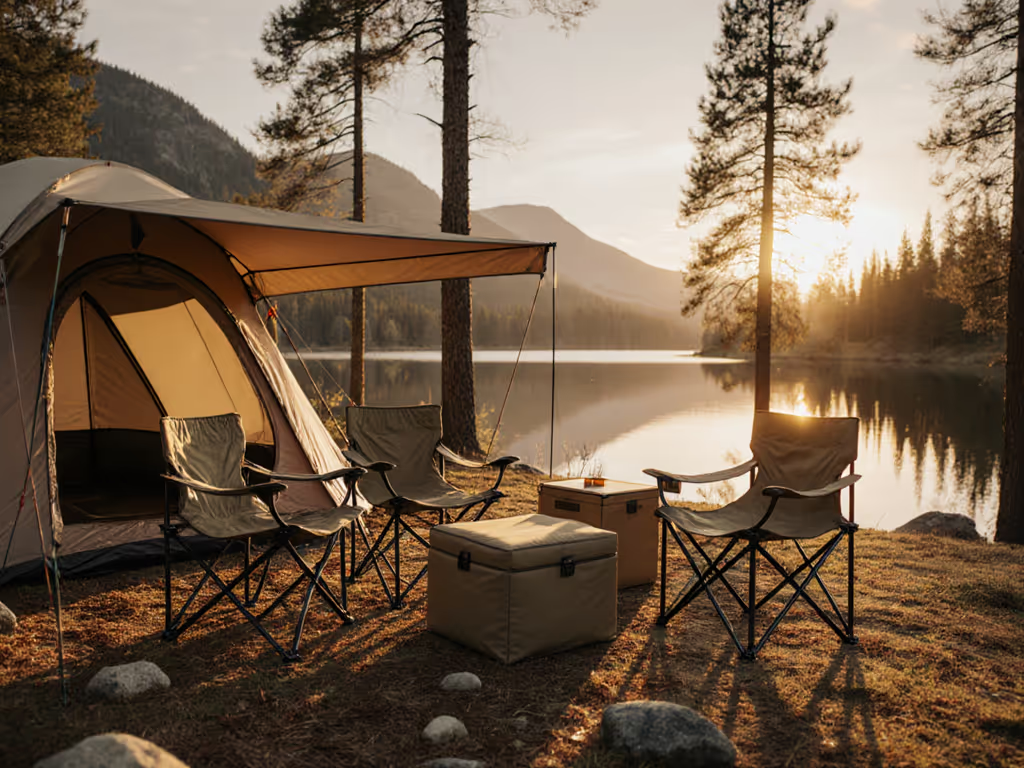
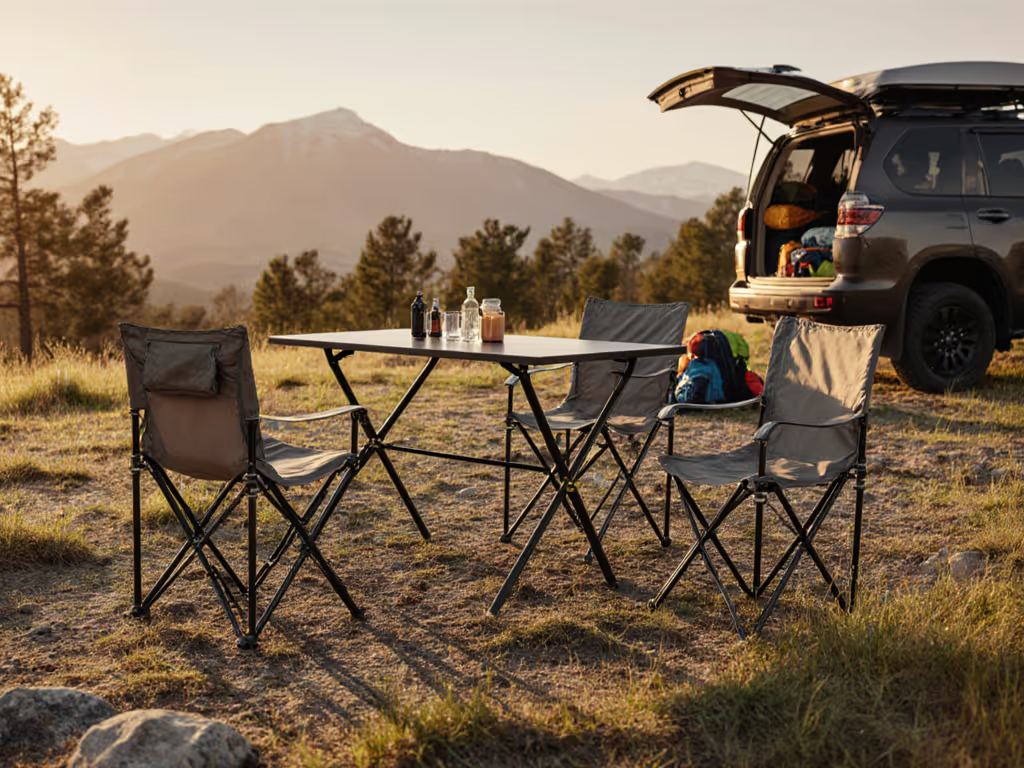
Best Camp Furniture Systems: Proven Value Sets
Build a cohesive camp furniture kit that fixes height mismatches, wobble, and packing chaos by prioritizing fit over brand. Use precise seat-to-table alignment, terrain adapters, and modular pairings like the Helinox ecosystem and an ALPS footprint to stay stable and scale from 2 to 6 without repeat purchases.
